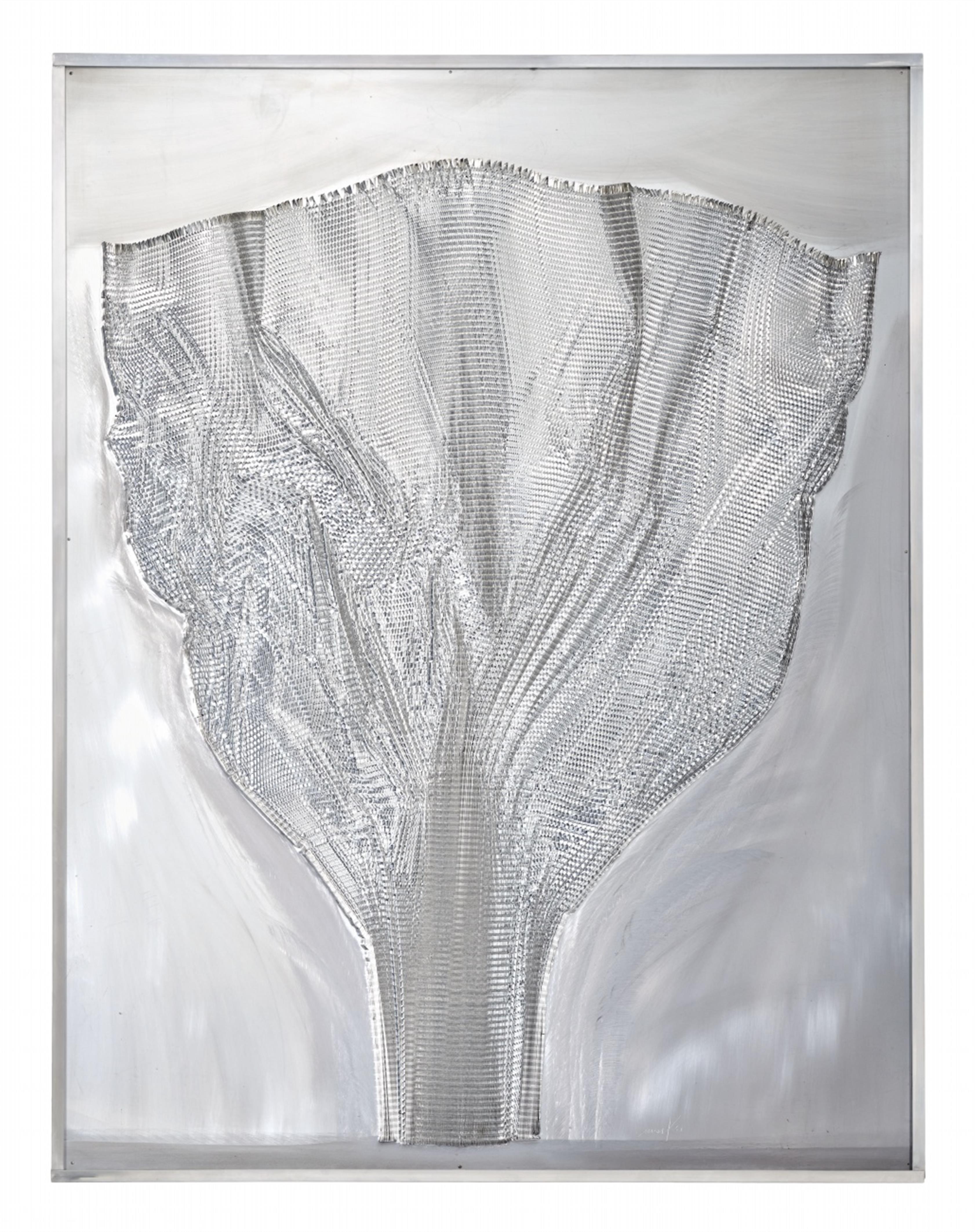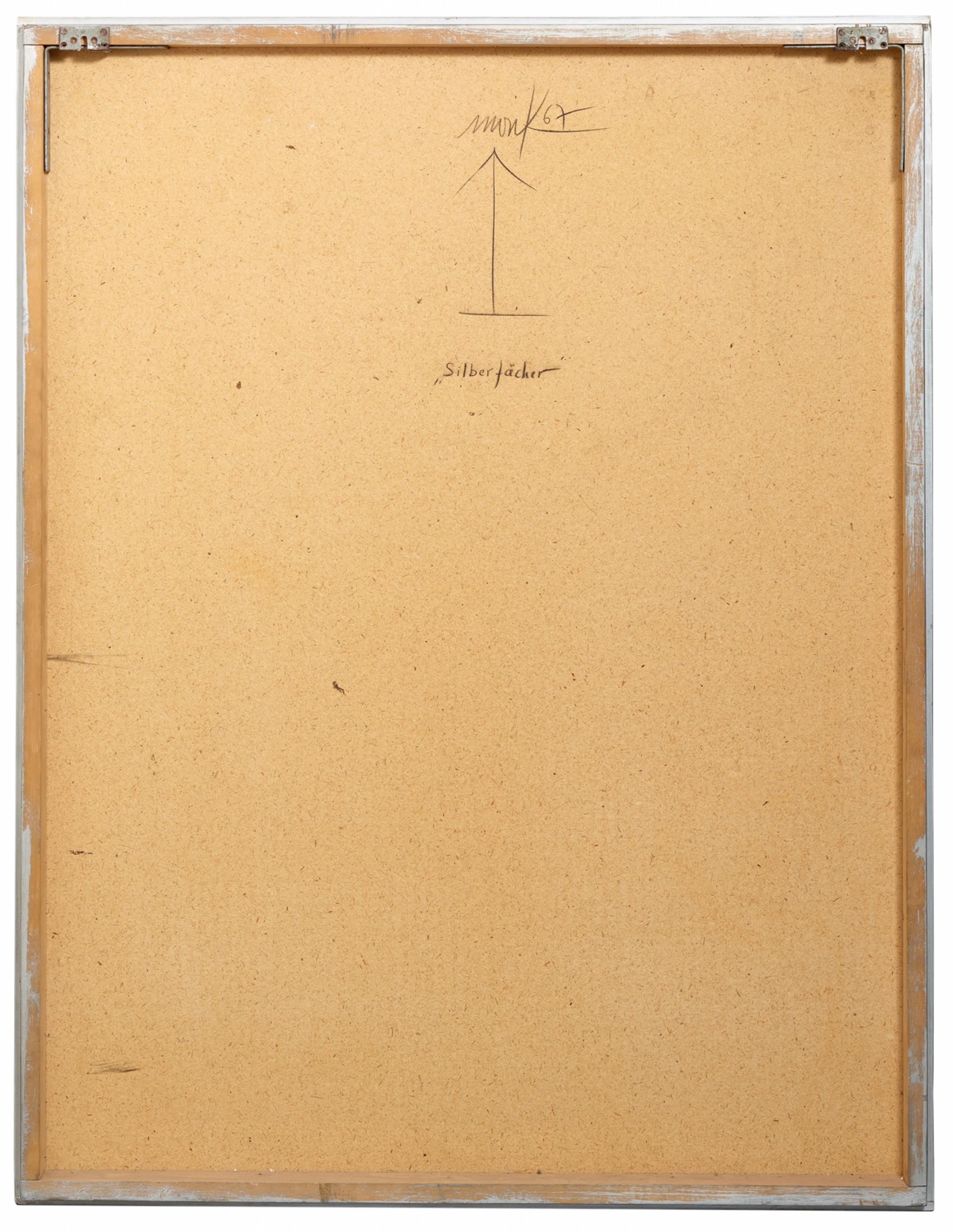Heinz Mack
Silberfächer
1966
Aluminium mesh on acrylic on wood. In artist's frame. 133 x 103 x 7 cm. Signed and dated 'mack 67'. Signed, dated, and titled 'mack 67 "Silberfächer"' verso on wood and with directional arrow. - Minor traces of age.
The energetic effect of light and its representabilty fascinated Heinz Mack from the beginning of his artistic career. Light and reflection, light and movement as an expression of design are encountered from the mid-1950s in his drawings, kinetic structures, reflective reliefs, in the form of dismantled light in the strong-coloured painting. The vibration of light and its variously dissipated appearance in artificial and natural space spur the artist on to explore its maximum effect, to seek out untouched regions such as the eternal ice or the seemingly endless expanse of a sandy desert. Mack's utopian "Sahara Project", formulated in 1959 and executed by the artist in 1968 in the Tunisian desert, realised an unexpected lighting effect that he captured in film and photography. Photographs that seem almost surreal document an artist in a silver space suit busy staging objects, that like a flash in the expanse of sand dunes under an immaculate blue sky, sharply reflect the unfiltered, strong sunlight.
With the help of the intense sun and the magical light of the moon, Mack creates a supernatural light effect and surprisingly transforms the untouched landscape into an artificial and futuristic light-kinetic space. This filigree mesh of aluminium, recognisable on closer inspection, is also of use in the desert of Morocco. It is made of a very fine, almost torsion-free net of hexagons, also used widely in aircraft construction due to its stiffness and simultaneous low weight. The inner surfaces reflect the incoming light like a mirror and generate a splendid spectral play of colours. Pulled apart by hand and formed into a fan-like formation, Mack plunges the slightly wavy, structurally distorted object directly into the desert sand. The artist arranges the so-called "light wings" as a dimensionally-large single form on an aluminium sheet, mounted on a solid wooden board and protected by a transparent plexiglass box. With fan-like scratch marks, Mack further outlines the shape of the relief on the carrier wall and heightens the effect of the hard material with a soft, slightly reflecting shadow that, as it were, dematerialises the boundary of the hard material. Mack is interested not only in the relatively easy handling of the material, but also its precise, strong character with the advantages of a light reflection, which he controls with a somtimes less dense or more widespread distortion and elicits unimagined colour reflections with the help of an artificially-fired light source. Heinz Mack reduces the experience in experimental operation with oversized materials in nature, to transparent, almost fragile, cell-like plants in his studio. His works have by no means only an optical effect, but rather an emotionally-imprinted event in the encounter with the material at the centre of his artistic aesthetics.
MvL
Provenance
Private collection, Berlin




